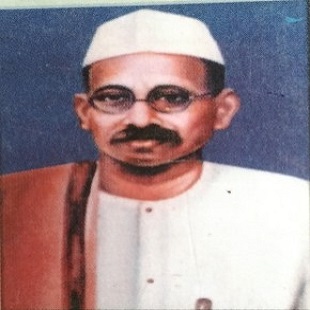
Dandu Narayana Raju (1889-1944) lived at Nela pogula village, Veeravasaram mandal, Bhimavaram taluka, West Godavari district. He was born on 15 October 1889 to Bhagavan Raju and Venkayamma. He graduated with B.A., and B.L. and started practicing as an Advocate. During the liberation movement, he was called ‘Sardar’. In response to the 1920 Non-cooperation movement, he gave up his law profession. He gathered funds for the Tilak Swaraj Nidhi. He served as DCC secretary from 1921 to 24 and as President in 1925, 1926, 1931, 1934, and 1935. From 1921 until his death, he was a member of the AICC. He organized National schools at Tanuku and Bhimavaram. He served as the Vice President of the Gandhi National School, Eluru; Secretary of the District Khadi Board in 1923, and as its President in 1924 and 1925; Secretary of the Bhimavaram Debt Conciliation Board, Eluru, District Cooperative Central Bank, and District Ryots Association from 1923 to 1927 and as its President in 1928 and 1929. He was a member of the Madras Legislative Assembly from 1926 until 1929 and again in 1937. For four years, he was the President of the District Board. He organized the Salt Satyagraha campaign and, on 23 April 1930, was convicted to one-year imprisonment in the Rajahmundry, Vellore, Tiruchirapalli, and Bellary jails. He was finally set free on 14 March 1931 after which he participated in the Civil Disobedience Movement, and was arrested on 9 August 1932. He spent a total of seven months in the Rajahmundry and Vellore prisons. On 24 January 1933, he was found guilty once more and was sentenced to six months in prison along with a fine of Rs. 200/-. He was sent to the Vellore and Tiruchirapalli jails for confinement. On 6 August 1941, he staged a satyagraha at Narsapur and was arrested on 15 August 1941 and was sentenced by the joint Magistrate of Narsapur to one year and a fine of Rs 500/-. He was imprisoned in the Vellore Central Jail until 8 January 1933. During the Individual Satyagraha movement, given six months and a fine of Rs 200/- or further three months. He again offered satyagraha on 6 August 1941 at Narsapur and on 15 August 1941 he was sentenced by the joint Magistrate, Narsapur to 1 year and a fine of Rs 500/- or further 3 months in default. He was kept in the Alipuram camp jail and was released on 13 December 1941 by the government. During the Quit India movement, he was detained under D.I.R. in the Vellore and Thanjavur jails from 12 August 1942 to 10 September 44. He died on 10 September 1944 in the Thanjavur jail due to heart failure.